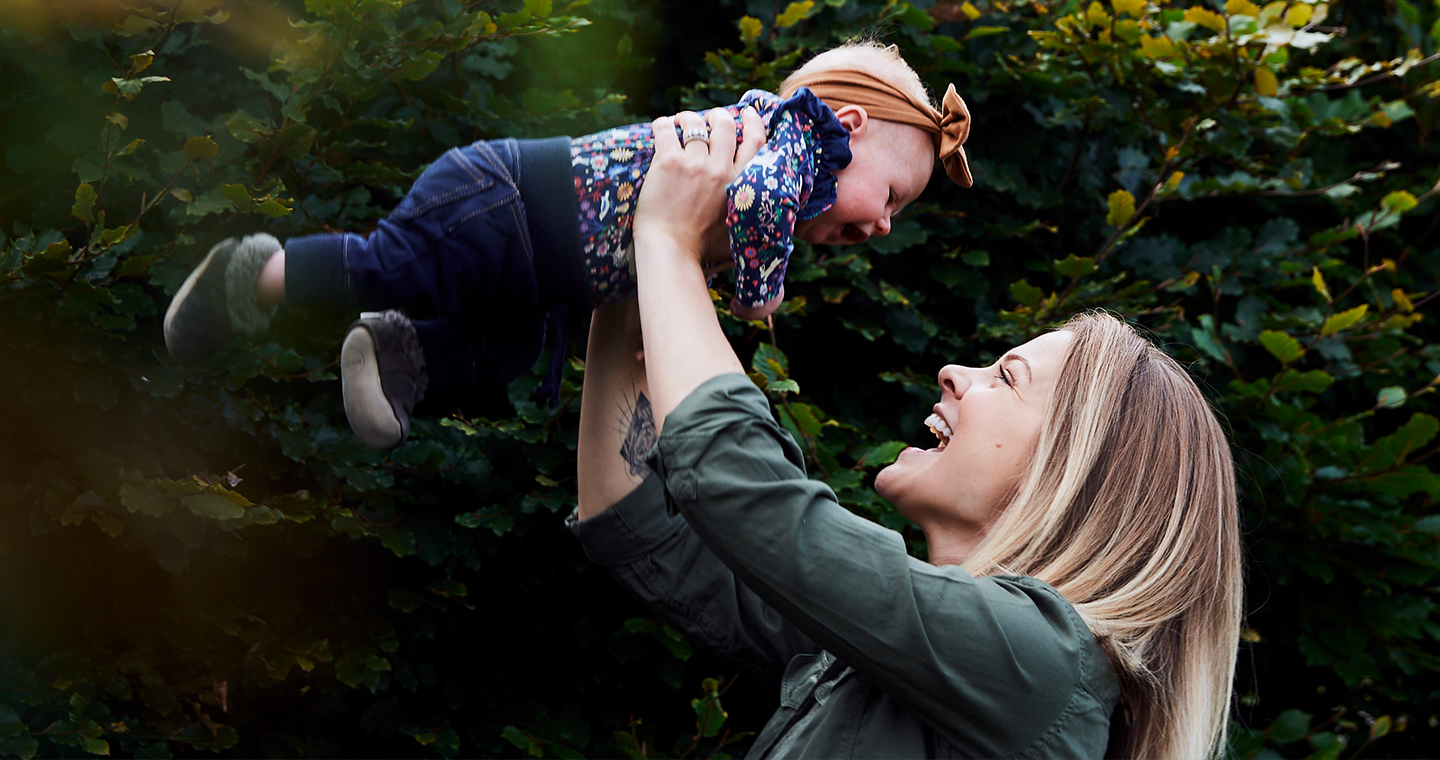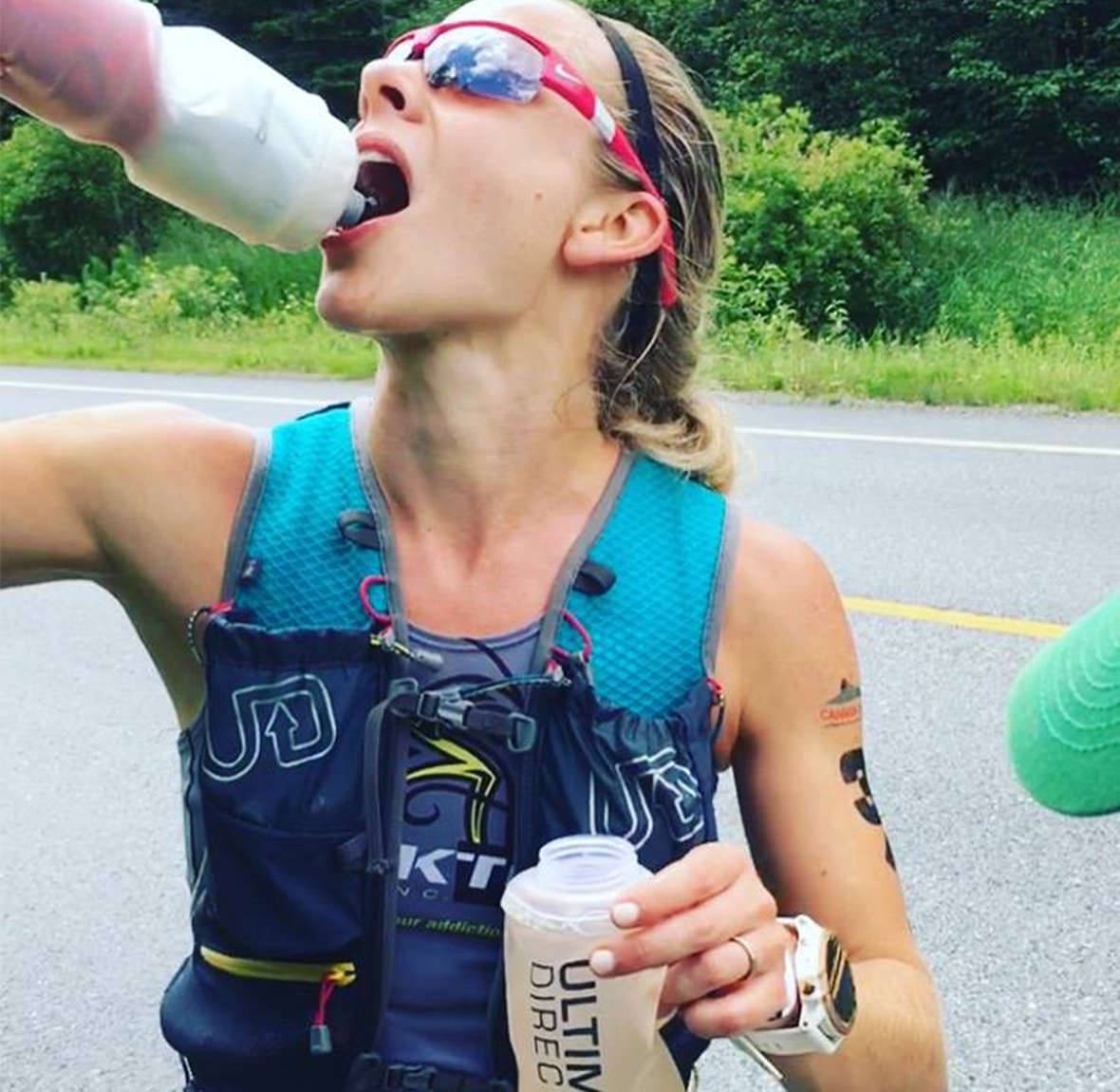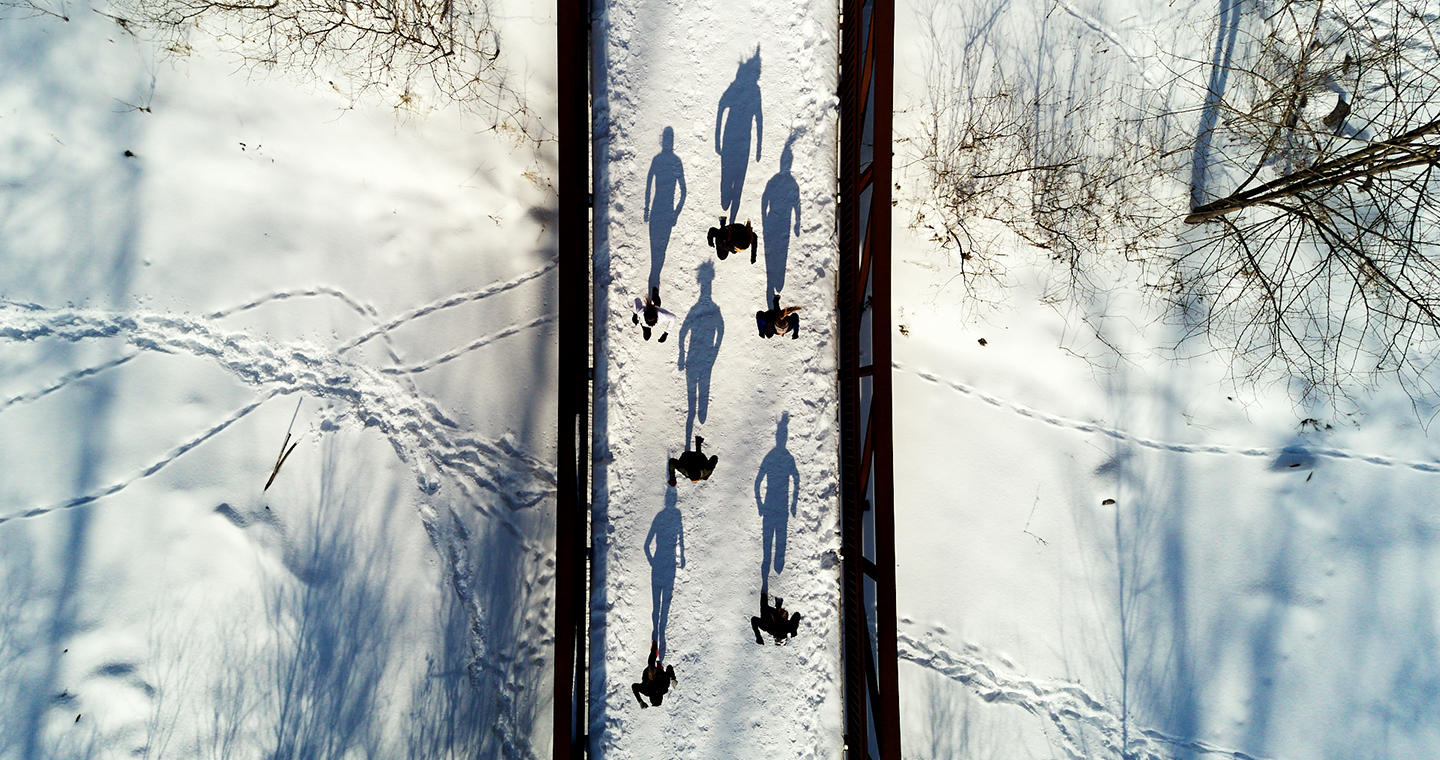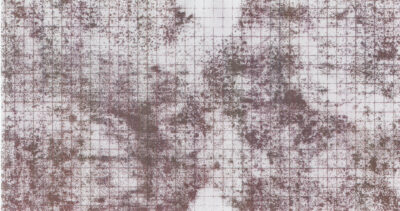
run mama, run
run mama, run

words x
lauren roberts
And just like that, with the birth of my daughter, a bomb went off in our lives. Despite not being allowed to have visitors at the hospital thanks to COVID protocols, despite the emergency C-section, despite the prenatal appointments that had been switched to clunky phone calls or cancelled altogether, despite it all – she was here. Like all new babies, she was perfect.
As the days ticked by and the new parent fatigue set in, we began to figure each other out. Time was a blur of feeding, some sleep, more feeding, maybe some more sleep, and diaper changes. Slowly, a routine began to emerge. After some weeks, I said to my partner, “I’d love to get outside for some fresh air and a run.” He replied, “You should go. Enjoy yourself.”
Prior to now, my running journey had taken many twists and turns. As a child, I’d been told running would be extremely difficult for me as my thigh bones were turned inwards. It turned out the doctors were wrong – as a kid I played any and every sport that I had access to and ran my first 5k at age 10. After this, I just kept going, racing and running consistently through my teens, twenties, and early thirties. I loved that the human body was so resilient and trainable.
As the days ticked by and the new parent fatigue set in, we began to figure each other out. Time was a blur of feeding, some sleep, more feeding, maybe some more sleep, and diaper changes. Slowly, a routine began to emerge. After some weeks, I said to my partner, “I’d love to get outside for some fresh air and a run.” He replied, “You should go. Enjoy yourself.”
Prior to now, my running journey had taken many twists and turns. As a child, I’d been told running would be extremely difficult for me as my thigh bones were turned inwards. It turned out the doctors were wrong – as a kid I played any and every sport that I had access to and ran my first 5k at age 10. After this, I just kept going, racing and running consistently through my teens, twenties, and early thirties. I loved that the human body was so resilient and trainable.
After I finished graduate school for physiotherapy, I qualified and raced in Austria for the Ironman 70.3 World Championships. In 2018, (the year of the frigid downpour) I raced the Boston Marathon. I’d ventured into the world of long-distance trail running and come out with a profound new respect for nature, my body, and life itself. My relationship with running had faded, strengthened, recreated itself and shape-shifted many times over the years.
Here I stood at my front door, shoes laced, wondering what to do.
Here I stood at my front door, shoes laced, wondering what to do.
should I run? could I run? why do I feel guilty for leaving my new baby alone?
My back still feels a little off, but I’m no stranger to discomfort. I think it’s okay? Is my scar healed enough? It looks like it, at least from the outside. The doctor, without actually seeing me since she’d performed my c-section, said wait 6-8 weeks; it had been nine – what magical change occurred at 8 weeks that granted me permission to run? What sign or feeling was I looking for that represented the metaphorical green light? Even as a healthcare professional myself, the answer to this question still felt ambiguous to me. Moreover, emotionally I felt like a shell of my previous strong self. Running used to be my confidence booster, my “thing”. A massive part of my identity. I was excited to go, but tentative and fearful at the same time. This transition occurring in my life that brought me from non-parent to parent had been happening slowly over the last nine weeks; where did running fit into that?
Later that week, I reached out to two female friends of mine who I used to run competitively with and both of whom had also recently had babies. For an hour over Zoom, we talked about how our bodies that we once counted on to do hard things now seemed foreign and detached to us. How it seemed like sound guidance didn’t seem to exist and that things like pelvic floor dysfunction were supposed to just “get better with time”. How if you’ve experienced something as taboo (but extremely common) as organ prolapse, your only option is to live with it or consider invasive surgery. How my one friend who was previously a 2:55 marathoner was “at peace with the fact she may never run again” after a particularly long and demanding labour that was taking many months to recover from. My heart broke for her.
Later that week, I reached out to two female friends of mine who I used to run competitively with and both of whom had also recently had babies. For an hour over Zoom, we talked about how our bodies that we once counted on to do hard things now seemed foreign and detached to us. How it seemed like sound guidance didn’t seem to exist and that things like pelvic floor dysfunction were supposed to just “get better with time”. How if you’ve experienced something as taboo (but extremely common) as organ prolapse, your only option is to live with it or consider invasive surgery. How my one friend who was previously a 2:55 marathoner was “at peace with the fact she may never run again” after a particularly long and demanding labour that was taking many months to recover from. My heart broke for her.
the martyrdom of motherhood was already taking its toll. something that was previously so beloved to her had been taken and overshadowed by the insurmountable weight and importance of the new life she had created.
Where were her supports? Where is this village that people speak so fondly of to help take care of the baby and the new mother? Why is it acceptable that a woman must sacrifice something that makes her so happy in order to be considered successful? I can attest firsthand that women can do hard things. But we all need support. Guidance. Help.
There are a lot of new mother runners in the media who seem to be doing amazing. They have come back even better and faster than they were before. But where are the stories of the women whose bodies and minds are struggling? Who haven’t been able to throw themselves back into a training plan because they simply cannot? Inspiration is great, but so is honesty. And part of honesty is struggle.
Next, I spoke with Melissa Offner, a first-time mom and an avid runner who leads the RUNDISTRIKT run club out of North Vancouver, to further try to understand and better articulate what these problems were and investigate what we can do as a community to find solutions.
Mel told me that prior to having her daughter, she had searched for as much information as she could about running while pregnant as well as returning to running postpartum. Working in media and wellness, she even had access to a PT prior to having her daughter to learn about some of the signs and symptoms that her body would give her once it was time to stop running while pregnant.
Next, I spoke with Melissa Offner, a first-time mom and an avid runner who leads the RUNDISTRIKT run club out of North Vancouver, to further try to understand and better articulate what these problems were and investigate what we can do as a community to find solutions.
Mel told me that prior to having her daughter, she had searched for as much information as she could about running while pregnant as well as returning to running postpartum. Working in media and wellness, she even had access to a PT prior to having her daughter to learn about some of the signs and symptoms that her body would give her once it was time to stop running while pregnant.
although she felt confident prior to giving birth that she had all the tools and knowledge necessary to get back to running, everything changed once she had her daughter.
After a long labour, Mel ended up being diagnosed – misdiagnosed twice actually – by not only a midwife but also the first PT she saw. The midwife told her that everything was fine, but the PT told her that three of her organs had prolapsed. At that time, her PT was not sure she would be able to get back to running. Mel was given contradictory information about what she had and how severe the situation actually was. The confusion and mixed diagnoses sent her into a spiral of darkness and despair, and Mel found herself spending hours online trying to find information about runners who had suffered from prolapse and what the treatment and outlook looked like.
Not only was the information sparse, but she was surprised by how few options she had.
Not only was the information sparse, but she was surprised by how few options she had.
she was terrified and felt so alone without friends and family nearby, and felt like no one understood how devastating it would be if she would never be able to run again.
It wasn’t until she was able to see the original PT she had seen during her pregnancy that she felt a glimmer of hope. Not only did the PT properly diagnose her with a stage 1 vaginal prolapse, but the two of them were able to create a return to running plan together. Her PT also shared valuable information with her about exercises that could help – how for example breastfeeding affects the tissues in the body and healing, tests she could do at home to measure her readiness to get back to running, as well as some of the potential tools she could use such as a pessary that she ended up getting fitted for several months later. Without the PT’s guidance and knowledge, Mel would still be living in fear today. She does still worry every time she heads out the door for a run as she knows she’s not back to 100% yet, and she still isn’t sure if running will ever feel like it did before. But, the progress she’s made in the past few months has felt great.
Mel is committed to sharing her story as much as possible with as many people as she can because she never wants anyone to feel the despair that she felt when she thought her running journey was over. Prolapse and other pelvic floor related issues are still considered taboo and are a foreign subject for so many parents. It is both of our hopes that articles like these can give hope to more women out there and make them realize they are not alone.
Mel is committed to sharing her story as much as possible with as many people as she can because she never wants anyone to feel the despair that she felt when she thought her running journey was over. Prolapse and other pelvic floor related issues are still considered taboo and are a foreign subject for so many parents. It is both of our hopes that articles like these can give hope to more women out there and make them realize they are not alone.

new moms, new parents, I hear you. there exists a big, huge, void that exists during arguably the hardest part of our lives to date.
When the one thing that has remained a constant for us is suddenly replaced or muddled with fear, anxiety, sadness, or loss, we should be able to find support. Today’s culture has tried to glamorize our suffering by putting cute designs on adult diapers. By creating memes about how leakage post-partum when you sneeze is humorous. No new mom wants to wear adult diapers any longer after birth than they have to. It actually is extremely embarrassing to struggle with incontinence issues. These are not facts of life that should just be accepted and joked about when solutions exist.
Please know you aren’t alone. Yes – your baby matters, but so do you. The best thing you can do for your child is to be emotionally well. If running is a part of your wellness, it should be a mandatory non-negotiable in your life and not something that is tossed aside. Do not accept vague or poor advice that comes from someone who isn’t hearing you. Realize that our healthcare system is not built on nuances – it is built to bring lives into the world safely and save them when they’re in dire straits. The grey area in between is where most of us fall through the cracks, but the grey area is the messy place where we’re doing all our living. The grey area is where all of the best and most beautiful things are found.
Please know you aren’t alone. Yes – your baby matters, but so do you. The best thing you can do for your child is to be emotionally well. If running is a part of your wellness, it should be a mandatory non-negotiable in your life and not something that is tossed aside. Do not accept vague or poor advice that comes from someone who isn’t hearing you. Realize that our healthcare system is not built on nuances – it is built to bring lives into the world safely and save them when they’re in dire straits. The grey area in between is where most of us fall through the cracks, but the grey area is the messy place where we’re doing all our living. The grey area is where all of the best and most beautiful things are found.

in canada and the US, your first line of defence should be to find a pelvic floor physiotherapist, particularly one who has training in working with athletes.
In many places in Europe, these therapists are already considered a standard and routine part of post-partum care; unfortunately in North America, you have to work a little harder to advocate for yourself. These therapists are usually covered under Canadian or American extended health benefit programs and do not require a physician’s referral to be seen. They are specifically trained in assessing and treating the internal pelvic muscles that line the pelvis like the inside of a bowl. While it may seem intrusive, these muscles are often initially beyond most of our conscious control, but we can learn how to use them with specific training. Often your problem can be corrected or vastly improved in just a few visits. Also, this person should listen to you and help you with your specific concerns, and this is just as important as how good they are with their manual skills. Be clear with what your goals are. Physios are Type-A folks who love clear goals to work towards. Don’t be afraid to explain all of your symptoms or your history, even if you’re shy. The more information you can provide, the better. If you’ve seen a pelvic floor therapist and don’t feel they’ve been helpful or you don’t feel like you’re vibing, press on and find someone who you feel better with. Have some patience and awareness that things take time, but not too much patience if you feel like you aren’t seeing any improvement.
it is possible to redefine ourselves as women who have children, and who also love to run. the choice does not have to be dichotomous.
The parts of you can be put back together, even if they’re rearranged or metamorphized into something that feels and looks a little different. It can take work in the form of rehab exercises, and it can take effort like arranging for childcare a few days of the week for you to leave the house. But one of the most beautiful things about running is it never goes anywhere. It’s always there, just outside your door, waiting for you to decide you’d like to dance again, fast or slow, waltz or jig. It isn’t always easy to learn the new steps to this dance, but with a bit of persistence – like anything – it will reward you for years to come.
more articles





